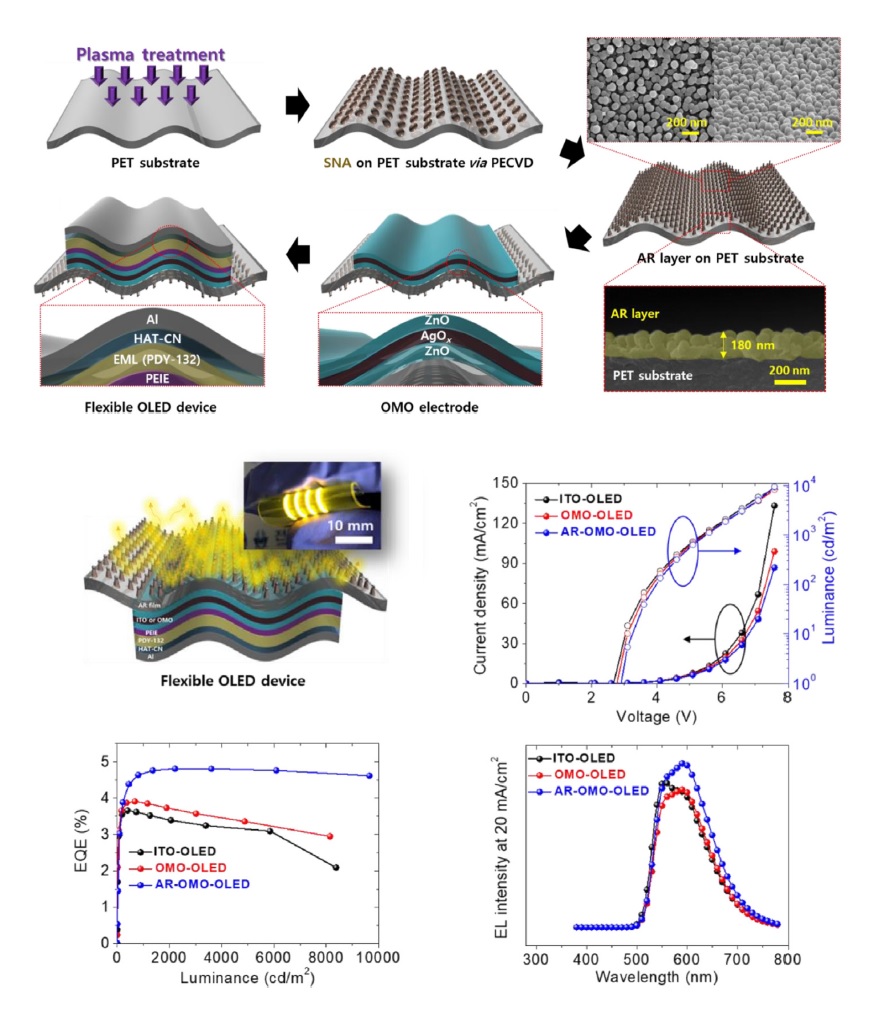- 작성일
- 2022.11.14
- 수정일
- 2022.11.14
- 작성자
- 강재욱
- 조회수
- 59
(159) K.-J. Ko, S.-R. Shin, H.B. Lee, E. Jeong, Y.J. Yoo, H.M. Kim, Y. M. Song*, J. Yun*, J.-W. Kang* “Fabrication of an oxide/metal/oxide structured electrode integrated with anti-reflective film to enhance performance in flexible organic light-emitting diodes” Mat. Today Energy. 20, 100704 (2021).

- 첨부파일
- 첨부파일이(가) 없습니다.
- 다음글
-
(160) H.B. Lee, N. Kumar, B. Tyagi, S. He, R. Sahani, J-W Kang* “Bulky Organic Cations Engineered Lead-halide Perovskites: A Review on Dimensionality and Optoelectronic Applications” Mat. Today Energy. 21, 100759 (2021).강재욱 2022-11-14 18:46:31.0
- 이전글
-
(158) J.-H. Kim, S.K. Hong, S.-J. Yoo, C.Y. Woo, J.W. Choi, D. Lee, J.-W. Kang, H.W. Lee,* M. Song* “Pt-free, cost-effective and efficient counter electrode with carbon nanotube yarn for solid-state fiber dye-sensitized solar cells” Dyes and Pigments. 185, 108855 (2021).강재욱 2022-11-14 18:38:50.0